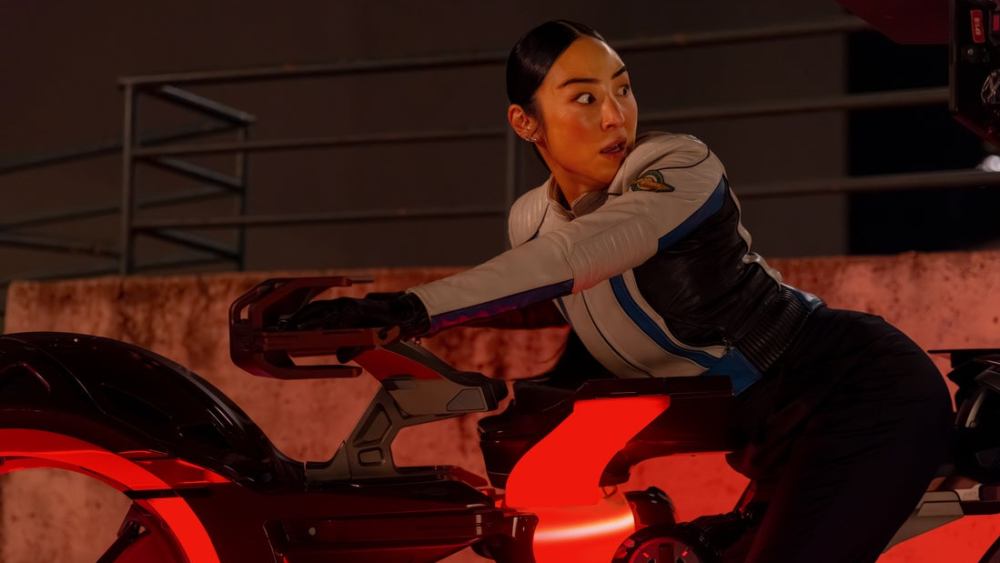Forty-three years after the first “Tron” movie hit theaters, the grid is back on track with “Tron: Ares.” The third film in the series follows Ares (Jared Leto), an intelligent computer program who begins to question the orders and direction of his CEO, Julian Dillinger (Evan Peters), and sets out on a collision course into the real world to find Encom’s current CEO, Eve Kim (Greta Lee). The lines between software programs and reality begin to blur as both Encom and Dillinger Systems race to find Kevin Flynn’s (Jeff Bridges) persistence code.
For production designer Darren Gilford, returning 15 years after working as production designer on Tron: Legacy was an opportunity to revisit ideas that were scrapped during the pre-production process for the film’s original 2010 sequel, directed by Joseph Kosinski. “There was a lot to carry over,” Guilford reveals. “Joe wanted[the sequel]to be more grounded in the real world, so the Dillinger Grid was always there from the beginning. We started it in 2015 or 2016, and I was starting the first concept art in the art department with[another]team of concept artists at the time. I was able to go back with Joachim[Ronning]and harvest some of those key elements.”
A variety of life-sized Dillinger lightcycles were constructed, along with substitute motorcycles, for the actors to ride during the chase scenes involving Eve, Ares, and Athena (Jodie Turner-Smith). Guilford explained that the bike needed to be military-inspired and practical, while also representing the aesthetics of Encom’s competitors.
“As we were developing the film and learning what the characters had to do, we had to understand what the rules of Lightcycle were. Most importantly, Lightcycle has two key riding positions and an aggressive high-speed position. This is my favorite look on this bike: when the full canopy is deployed and the backpack is deployed, the rider feels enveloped and swallowed up, just like man and machine,” he says.
To program the bike, Guilford and the production design team programmed a special energy source to keep the light cycle running during filming. “We created a power source in the middle of the bike, a yellow gyro that rotates and animates,” says Guilford. “Some of the bike’s motion is transferred through the movement of the bike. The yoke is the heart of the bike and is the equivalent of a hinge, meaning the front fork and front wheel actually rotate around that energy source.”
After working on both Legacy and Ares, Guilford says Tron: Ares was the first time he was able to create a working lightcycle for the series. “In ‘Legacy,’ we never actually built a real bike until the end. We just built it for marketing purposes. We built the original bike (digitally) and built the gimbal and rig for Garrett (Hedlund). But for this movie, Joachim was very vocal about having as much of a real bike towing on the road as possible. I have a background in transportation design and was originally a car designer, so I was honored and privileged to have this opportunity.” So that we can design these vehicles,” he says.

